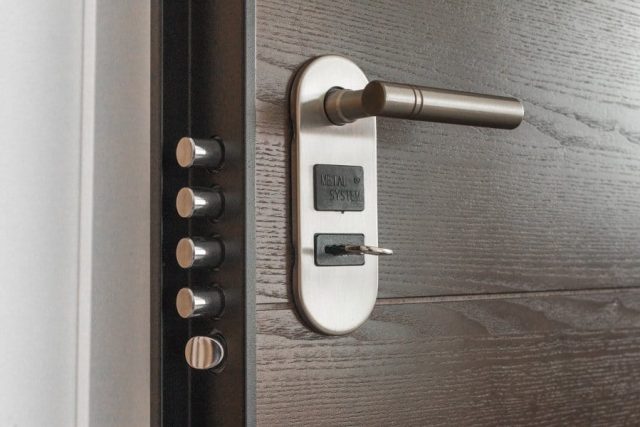Your home is your sanctuary, a place where you and your loved ones should feel secure and protected. In this fast-paced world, staying informed about the latest strategies and measures to ensure your home’s safety is paramount. From preventing accidents to deterring potential intruders, we’ve gathered the top insights and practical tips you need to know to create a safe haven for you and your family. Join us as we dive into the essential aspects of home safety that every homeowner should be well-versed in.
Securing Entry Points
Ensuring the safety of your home starts with fortifying its entry points. Upgrading to robust door locks and deadbolts provides a solid first line of defense against unauthorized access. You can contact a locksmith with expertise in security solutions to assess your current door locks and recommend advanced options tailored to your specific needs. Enhance security further by installing motion sensor lights and security cameras that deter potential intruders and provide valuable surveillance.
Reinforcing windows and sliding doors with proper locks and shatter-resistant glass adds an extra layer of protection. By focusing on securing entry points, you establish a proactive approach to home safety, creating a sense of peace and safeguarding your loved ones and belongings from potential threats.
Cybersecurity And Smart Home Safety
In an era of increasing connectivity, safeguarding your home extends to the digital realm. Prioritizing cybersecurity involves securing Wi-Fi networks with strong passwords and encryption protocols, thwarting unauthorized access to your smart devices. Protecting personal data and privacy online shields your family from potential identity theft and breaches.
Integrating technology for home automation and security demands careful consideration of each device’s security features and regular software updates. Ensure to have anti-theft equipment, such as motion sensors, door and window sensors, and surveillance cameras strategically placed to provide comprehensive coverage of your property.
By embracing smart home innovation while maintaining vigilant cybersecurity practices, you create a harmonious balance between modern convenience and safeguarding your home from virtual threats.
Fire Prevention And Preparedness
Mitigating the risk of fire hazards necessitates a twofold approach: prevention and readiness. Equipping your home with reliable smoke detectors and fire alarms forms a crucial first line of defense, promptly alerting you to potential dangers. Developing a family fire escape plan, complete with designated meeting points and practiced evacuation routes, ensures a swift and coordinated response in emergencies.
Moreover, understanding the proper use and maintenance of fire extinguishers empowers you to swiftly contain small fires before they escalate. By embracing these fire prevention measures and fostering preparedness, you create a safer living environment for your household.
Carbon Monoxide Awareness
Vigilance against the silent threat of carbon monoxide (CO) is paramount for a secure home. Recognizing the imperceptible nature of this toxic gas and its potential sources is crucial. Installing CO detectors and alarms in key areas provides an early warning system, allowing swift action in the event of a leak. Regular maintenance of fuel-burning appliances, chimneys, and ventilation systems mitigates the risk of CO buildup.
Educating your household on the symptoms of CO poisoning ensures timely detection and response. By prioritizing carbon monoxide awareness, you take a vital step in safeguarding your family from this hidden peril and fostering a healthier living environment.
Electrical Safety
Maintaining a secure home involves prudent management of electrical systems. Prevent overloading outlets and power strips to avert potential fire hazards. Regularly inspect electrical cords and appliances for signs of wear or damage, promptly addressing any issues. Employ extension cords and surge protectors judiciously, avoiding unnecessary risks.
Upgrading outdated wiring and fixtures enhances safety, reducing the risk of electrical mishaps. Foster a culture of awareness by educating your household on safe electrical practices, such as turning off appliances when not in use. By practicing vigilant electrical safety measures, you establish a resilient barrier against electrical accidents and bolster the overall security of your living space.
Childproofing And Pet Safety
Creating a haven for both young family members and furry companions demands meticulous childproofing and pet safety measures. Install safety gates to restrict access to hazardous areas and secure furniture and appliances to prevent tipping. Store chemicals, medications, and small objects out of reach, minimizing potential risks. Designate pet-friendly zones while safeguarding them from dangerous household items.
Cover electrical outlets and secure cords to prevent curious exploration. Regularly assess and adjust safety measures as children grow and pets adapt. By weaving childproofing and pet safety into your home’s fabric, you nurture an environment where both youngsters and four-legged friends can thrive, free from preventable accidents.
Home Emergency Kits
Preparing for unforeseen events necessitates the creation of comprehensive home emergency kits. Assemble a well-stocked first aid kit, including essential medical supplies and medications. Create a cache of non-perishable food and potable water to sustain your family during disruptions. Equip your kit with essential tools like flashlights, batteries, and a multi-purpose tool. Communication devices, such as a battery-powered radio, help stay informed during power outages.
Regularly review and refresh your emergency supplies, tailoring them to your family’s needs and local risks. By crafting effective home emergency kits, you ensure your readiness to navigate challenging circumstances, fostering resilience and safety within your household.
Natural Disaster Preparedness
In the face of unpredictable natural disasters, proactive planning is paramount. Develop robust strategies for earthquakes, hurricanes, and floods, tailored to your region’s risks. Identify safe areas within your home for shelter and establish meeting points for your family. Safeguard important documents and valuables in waterproof containers. Maintain an updated emergency contact list and communicate your plans with family members.
Stay informed about local emergency alerts and evacuation procedures. Regularly review and practice your disaster plans to ensure readiness. By prioritizing natural disaster preparedness, you empower your household to navigate crises with confidence and protect your loved ones’ well-being.
Creating a secure home environment is a multifaceted endeavor that encompasses fire prevention, cybersecurity, childproofing, and more. By incorporating safety measures such as smoke detectors, robust locks, and CO alarms, you establish a foundation of protection. Embracing technology while safeguarding against cyber threats ensures a harmonious blend of modern convenience and security. Childproofing and pet safety measures foster a nurturing environment, and disaster preparedness empowers your family to weather unexpected challenges. Through these diligent efforts, your home becomes a haven where safety, well-being, and preparedness converge, providing peace of mind for you and your loved ones.














